Sung Hoon Lim
Integrated Communication and Binary State Detection Under Unequal Error Constraints
Jan 31, 2025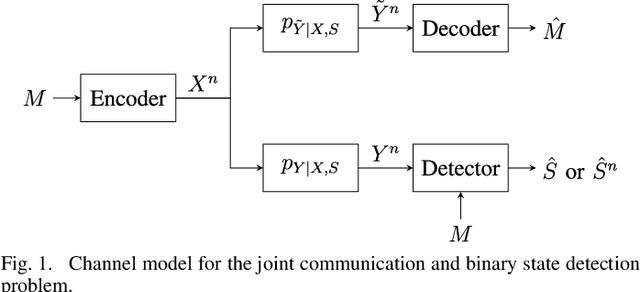
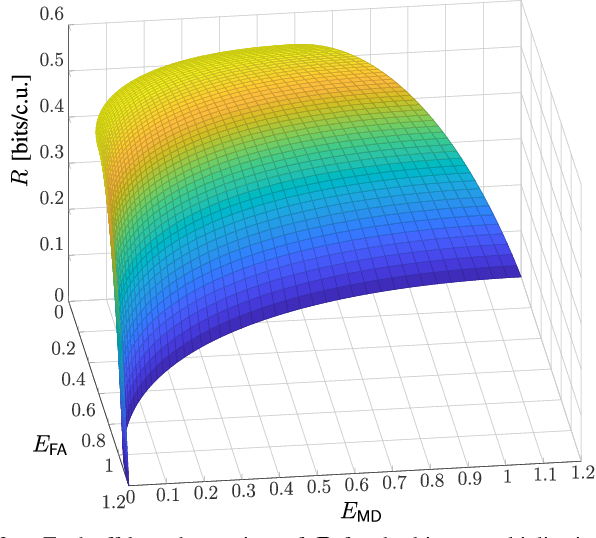
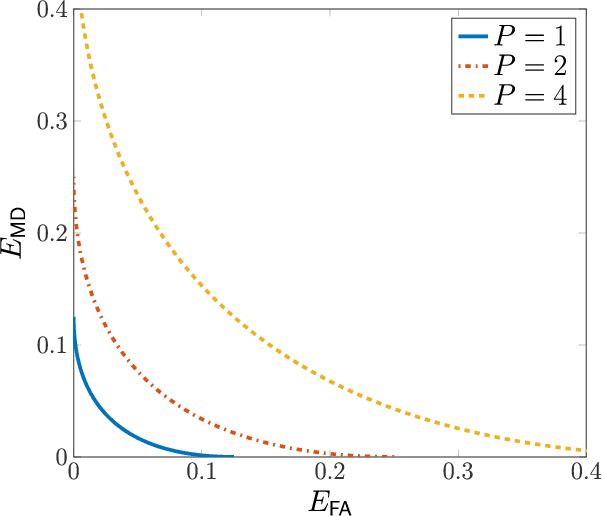
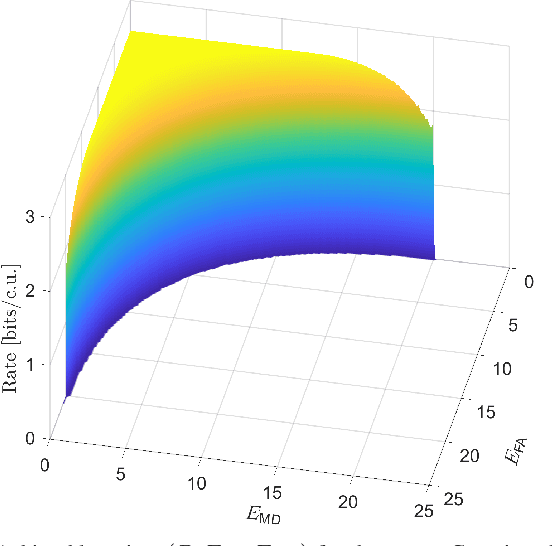
Abstract:This work considers a problem of integrated sensing and communication (ISAC) in which the goal of sensing is to detect a binary state. Unlike most approaches that minimize the total detection error probability, in our work, we disaggregate the error probability into false alarm and missed detection probabilities and investigate their information-theoretic three-way tradeoff including communication data rate. We consider a broadcast channel that consists of a transmitter, a communication receiver, and a detector where the receiver's and the detector's channels are affected by an unknown binary state. We consider and present results on two different state-dependent models. In the first setting, the state is fixed throughout the entire transmission, for which we fully characterize the optimal three-way tradeoff between the coding rate for communication and the two possibly nonidentical error exponents for sensing in the asymptotic regime. The achievability and converse proofs rely on the analysis of the cumulant-generating function of the log-likelihood ratio. In the second setting, the state changes every symbol in an independently and identically distributed (i.i.d.) manner, for which we characterize the optimal tradeoff region based on the analysis of the receiver operating characteristic (ROC) curves.
On the Fundamental Tradeoff of Joint Communication and Quickest Change Detection
Jan 23, 2024Abstract:In this work, we take the initiative in studying the fundamental tradeoff between communication and quickest change detection (QCD) under an integrated sensing and communication setting. We formally establish a joint communication and sensing problem for quickest change detection. Then, by utilizing constant subblock-composition codes and a modified QuSum detection rule, which we call subblock QuSum (SQS), we provide an inner bound on the fundamental tradeoff between communication rate and change point detection delay in the asymptotic regime of vanishing false alarm rate. We further provide a partial converse that matches our inner bound for a certain class of codes. This implies that the SQS detection strategy is asymptotically optimal for our codes as the false alarm rate constraint vanishes. We also present some canonical examples of the tradeoff region for a binary channel, a scalar Gaussian channel, and a MIMO Gaussian channel.
Hybrid Neural Coded Modulation: Design and Training Methods
Feb 04, 2022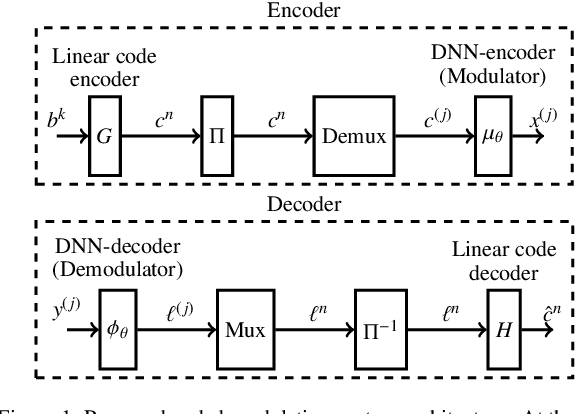
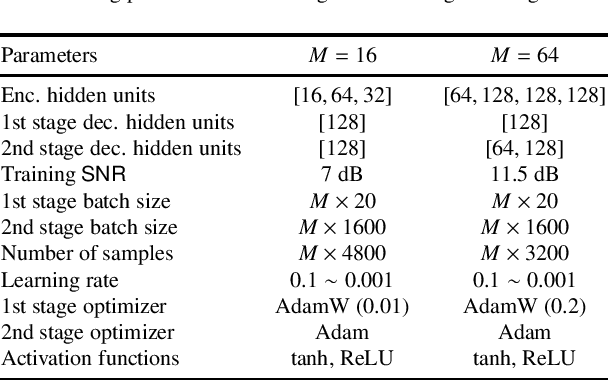
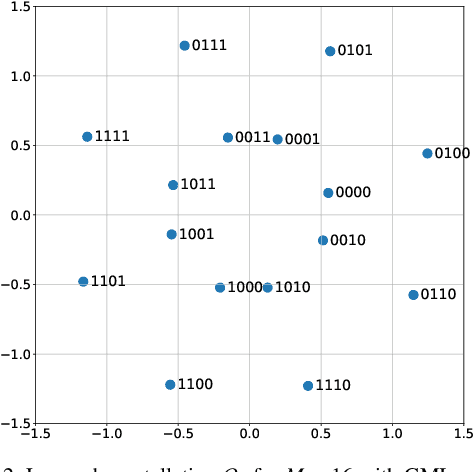

Abstract:We propose a hybrid coded modulation scheme which composes of inner and outer codes. The outer-code can be any standard binary linear code with efficient soft decoding capability (e.g. low-density parity-check (LDPC) codes). The inner code is designed using a deep neural network (DNN) which takes the channel coded bits and outputs modulated symbols. For training the DNN, we propose to use a loss function that is inspired by the generalized mutual information. The resulting constellations are shown to outperform the conventional quadrature amplitude modulation (QAM) based coding scheme for modulation order 16 and 64 with 5G standard LDPC codes.
 Add to Chrome
Add to Chrome Add to Firefox
Add to Firefox Add to Edge
Add to Edge